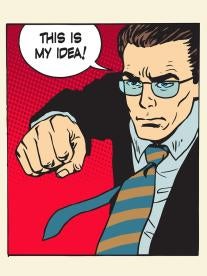As the first-filed paper in nearly any litigation, the complaint is typically subject to rigorous scrutiny from the named defendant to identify any flaws that may dispatch the case via a motion to dismiss. A plaintiff in the District of Connecticut recently felt this pain, as its complaint was dismissed under Rule 12(b)(6) for failing to allege sufficient facts in support of its trade dress infringement and unfair competition claims.
Plaintiff AJB Enterprises, LLC (“AJB”) manufactures and sells an S-shaped cane massager under the name “Trigger Point Massager.” AJB entered into licensing discussions with Defendant BackJoy Orthotics, LLC (“BackJoy”), a marketer of chiropractic products, that would enable BackJoy to distribute a version of the Trigger Point Massager to various retailers. As part of the negotiations, the parties executed a non-disclosure agreement pursuant to which AJB provided BackJoy with confidential information relating to manufacturing of the massager. AJB also set up manufacturing facilities to produce the product, and the parties then conducted successful test marketing and sales activities. However, the parties never reached an agreement on licensing terms–but BackJoy continued selling the massager anyway.
AJB subsequently sued BackJoy for trade dress infringement and unfair competition under the Lanham Act. In response, BackJoy filed a 12(b)(6) motion to dismiss arguing that AJB’s complaint lacked sufficient factual details to support its claims.
The Court first examined the strength of AJB’s complaint on the trade dress infringement issue. The Court cautioned that trade dress protection typically does not extend beyond product packaging to aspects of a product’s design. Also, the Court noted, “[t]here are three core elements to a trade dress infringement claim: a plaintiff must allege that ‘(1) the claimed trade dress is non-functional; (2) the claimed trade dress has secondary meaning; and (3) there is a likelihood of confusion’ between the products.”
First, Judge Bolden confirmed that the claimed trade dress goes beyond packaging to encompass the design of the massager, including the “overall elongated S-shaped cane configuration” and strategically placed “massage nubs.” AJB’s complaint identified these features as “distinctive,” but failed to explain how the features made the product distinctive over other types of cane massagers. Instead, AJB included the relevant details in its opposition briefing. Because Rule 12(b)(6) limits the Court to the facts presented in the four corners of the complaint, the Court concluded that AJB’s pleading failed to provide sufficient detail to survive BackJoy’s motion.
The Court proceeded to evaluate the remaining elements of AJB’s trade dress infringement claim. Judge Bolden found that, although BackJoy’s massager is essentially indistinguishable from AJB’s massager (which indicates that the likelihood of confusion element was sufficiently pled), AJB’s complaint failed to provide sufficient facts to support the other two elements. On the element of non-functionality, Judge Bolden noted the statutory presumption that features are deemed functional until proven otherwise by the party seeking trade dress protection. Because AJB’s complaint merely stated that cane-shaped massagers in various configurations have long been sold in the market and that such products are “effective,” rendering AJB’s product features non-functional, the Court found these allegations insufficient to rebut the presumption. For secondary meaning, AJB’s assertions that it had sold the massager for over 20 years and had advertised the S-shaped configuration in connection with the product did not convince the Court that a sufficient connection exists between the claimed trade dress and AJB as the source of the trade dress. Because AJB’s complaint had failed in these material respects, Judge Bolden dismissed AJB’s trade dress infringement claim under 12(b)(6).
The Court then turned to the sufficiency of AJB’s complaint with respect to the federal unfair competition issue. AJB first alleged that BackJoy engaged in unfair competition by infringing AJB’s trade dress based on BackJoy’s sales of the massager. As noted above, the Court found that AJB did not sufficiently plead a protectable trademark interest in the massager trade dress–so AJB’s unfair competition claim relating to sales of the massager could not survive.
AJB also put forth a federal unfair competition claim based upon BackJoy’s use of the trademark “Trigger Point Massager” in combination with the claimed trade dress. The Court also dismissed this claim, explaining that the alleged “Trigger Point Massager” mark did not appear entitled to trademark protection under the Lanham Act because of its descriptive nature. As AJB’s complaint did not lay out any facts to support distinctiveness or acquisition of a secondary meaning for the mark, the Court likewise dismissed this claim under 12(b)(6).
Notably, Judge Bolden granted AJB leave to file an amended complaint within thirty days of the Court’s order, to include additional facts that may remedy the deficiencies of its initial pleading.
Judge Bolden’s opinion in this case offers a useful blueprint for those drafting trade dress infringement and unfair competition claims in the Second Circuit to ensure that their papers allege facts sufficient to meet the court’s pleading requirements. Plaintiffs should closely examine their complaints to diagnose and remedy any potential factual deficiencies prior to filing, or they may feel the pinch if the court issues an unfavorable ruling on their adversary’s motion to dismiss.
The case is AJB Enterprises, LLC v. BackJoy Orthotics, LLC, Case No. 3:16-cv-00758 (VAB) (Dec. 16, 2016), before Judge Victor A. Bolden.



 i
i


